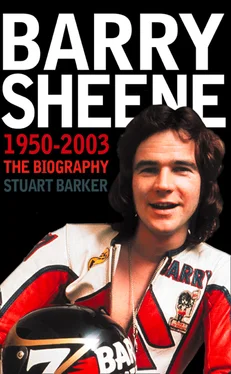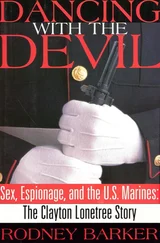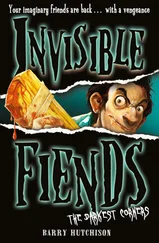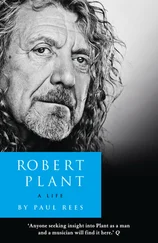Having failed his bike test first time round because the number plate fell off his machine (in his 1976 book The Story So Far , Sheene wrote that he took his test on a 75cc Derbi, but in 2001 he claimed it was on a BSA Bantam), Barry passed at his second attempt, although he told Bike magazine years later that ‘In no way did it [the bike test] prepare me for the road. Absolutely not. In the same way that shagging your girlfriend in a Transit van does nothing to prepare you for married life.’ Having passed, Sheene was handed a BSA Bantam (which perhaps explains his confusion over which bike he had passed his test on) with which to deliver proofs and copy around London for an advertising agency. His wages jumped up to a healthier £12 a week, and more importantly for the girl-mad young Sheene, he got to meet lots of glamour models.
Needless to say, no motorcycle could be taken back to the Sheene household without Frank giving it the once-over, and the British-built Bantam was no exception. Frank soon had it tweaked and tuned to reach a top speed of 80mph, which, through London traffic at any rate, was about as fast as even Barry Sheene dared to go.
Barry enjoyed his stint as a courier, and no doubt it helped to hone his riding skills since travelling through heavy London traffic at speed is no easy task. But at the time money was more important than job satisfaction, and when a friend offered him more cash for sprucing up second-hand cars for his showroom, Barry gladly accepted.
After eighteen months of valeting cars it was time for another change, and Sheene took to driving a truck around London delivering antique furniture, quite often to television stage-sets. He had to lie about his age to get the job and had to show his prospective employers his dad’s driving licence which included the all-important HGV stamp, but somehow it worked and Barry found himself employed as a truck driver. The only problem was, he couldn’t drive a truck. This shortcoming was compounded when his new boss asked him for a lift in the truck straight after the interview. Sheene thought fast and insisted he had to have some time to check the truck over in the yard before he drove it, him being so safety conscious and all. His boss seemed suitably impressed and sought alternative transport, leaving his relieved new employee to drive round and round a nearby car park, familiarizing himself with the skills required to drive a heavy goods vehicle. Sheene took to the task easily, passed his month’s probation without any problems, and was once more to be seen despatching goods around London, albeit at a much more sedate pace.
Barry had been a competent driver, of cars if not HGVs, long before he passed his driving test first time round at the age of 17 in his father’s Rover 105. At just eight years of age he was driving an Austin Ten round the back yard at the Royal College of Surgeons. He was so small that Frank had had to fix lumps of wood onto the foot pedals. But cars never held a great appeal for Barry. To his mind, they were simply more useful for pulling women than anything else, so the style of his four-wheeled transport was more important than its performance. Most 17-year-old boys would have been delighted to be given a Thames van by their fathers, as Barry was, but he bemoaned the fact that it ‘wasn’t too flash for pussy-pulling’.
Although the young Sheene had his uses for cars, it was bikes that he was instinctively drawn to. After all, he’d been surrounded by them and their racers since birth, and even though in the early part of his youth he harboured no ambitions of being a racer, it seemed almost inevitable that he would at least try his hand at it eventually, if only out of curiosity.
The seeds of Barry’s racing career were sown, albeit indirectly, during a trip to Spain when he was eight years old. In 1958 Frank took his son to see the then-famous Barcelona 24-Hour race at Montjuich Park, and during the trip Frank introduced himself to Francesco Bulto, the head of Spanish bike manufacturer Bultaco. The two soon became friends, and it was this friendship that eventually led to Barry’s racing debut. Through Señor Bulto, Frank managed to secure a place on the first racing Bultaco to come into Britain, and he actually won a race on it first time out at the now defunct Crystal Palace circuit. Frank was suitably impressed with the capabilities of the machinery, and from that point onwards he received two new factory models at the beginning of each year to set up for other riders to race. During that 1958 trip, Bulto had allowed Barry to sit on one of his bikes and showed him how to change gears for the first time. He also reportedly told Barry that one day he would ride a factory Bultaco for him. Although he was no doubt simply humouring the child, his prediction came true fewer than ten years later when Barry made his racing debut at Brands Hatch on one of Bulto’s factory machines.
Throughout his childhood and youth, Barry had accompanied his dad to race meetings almost every weekend during the summer; if Frank wasn’t going to be attending a race or a practice day for whatever reason, young Barry would scrounge a lift from one of the many racers he had got to know in the paddock. Before he ever turned a wheel in anger, Barry Sheene was a paddock institution who could be seen either offering technical advice to riders or just generally mucking in by carrying tyres, working stopwatches or cleaning bikes. He was, quite literally, born to the paddock.
He had, for example, worked on Chas Mortimer’s bikes when Mortimer was racing them for Frank. Chas went on to win eight Isle of Man TTs and had a successful career in GPs and in British championships, as well as being Sheene’s team-mate at Yamaha in Grands Prix in 1972. ‘Barry worked for me as my mechanic when I rode for his father Frank in, I think, 1967,’ Mortimer recalled. ‘I did a few meetings in the UK on his 125 and 250cc Bultacos. Barry was quite good with the spanners even then, he always has been. I remember he used to run my bikes in for me when he was a young, long-haired youth living in Holborn. Franco and Barry used to work on the bikes in the workshop there; well, Barry would work on the bikes and Franco would be doing the talking, the team manager bit.’ Mortimer thought that the fundamentals of the characteristics which later made Sheene famous were already in place in the late sixties. ‘Barry was always quite outspoken, he was quite a precocious boy. He got his reputation with the women from right early on, and I remember when he was 14 he was smoking 30 fags a day – breaking the filters off the ends, of course.’
Multiple British champion John ‘Moon Eyes’ Cooper – so called because of the trademark eyes painted on his helmet – also remembered Sheene around the racing scene as a youngster. ‘I’ve known Franco for about 50 years,’ he said. ‘I never rode his bikes but he was always about the paddocks, riding at first then tuning bikes for other riders. Barry was always around too. When he was about 15 he used to come and stay at my house with a racer called Dave Croxford because he was helping Dave a bit at the races.’ Croxford was just one of a long list of riders who raced Frank Sheene’s bikes, and the young Barry would not only help him with the spanners, he would also be constantly absorbing valuable information from everything he saw and heard around him. ‘I’d watch the blokes on dad’s bikes [and] note how they would handle them,’ he explained, ‘listen for anything that sounded off-song. I certainly knew how an engine worked even then. While other lads would know who played outside-left for Arsenal, I could explain the principles of a two-stroke motor.’
In early 1968, Sheene experienced an even more direct involvement with racing, this time on the other side of the armco. Frank had just received his usual allotment of Bultacos – a 125cc machine and a 250cc bike – for the coming season. After stripping and rebuilding them to his own particular specifications, as every bike tuner does, he asked Barry to run them in for him at Brands Hatch. He knew his son would be mechanically sympathetic during the running-in process and he also knew that as Barry wouldn’t be out to prove anything on the track there was little chance of him crashing the precious bikes before they were even raced. Besides, there was no one else available at the time. Little could the pair have known that that inauspicious track debut would lead to one of the most glittering careers in motorcycling history.
Читать дальше












